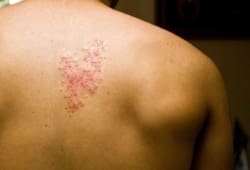
What is an anal fistula?
An anal fistula is an abnormal tube-like connection that forms between the inside of the anus (at the anal gland) and the skin right outside the anus. Think of it as a tunnel under your skin.
Symptoms of an anal fistula
The abscess that causes the fistula is quite painful. It can cause intense pain and swelling around the anus. This pain gets worse with bowel movements. Sometimes there’s discharge from the opening around the anus. You may also have a fever and bleeding around the area.
What causes an anal fistula?
An anal fistula usually begins with an infection in an anal gland. This infection can cause an abscess (a swollen area where pus gathers). As the pus drains, it can leave a channel between the bowel and the skin. This channel (or tunnel) is the fistula.
How is an anal fistula diagnosed?
Your doctor can diagnose an anal fistula with a physical exam of the anal area. If your doctor sees a fistula, they will usually try to determine the depth and direction of the fistula. In some cases, your doctor may order an ultrasound or an MRI. These tests will let your doctor see the fistula inside your body.
Can an anal fistula be prevented or avoided?
Almost all anal fistulas develop as a result of an abscess in the area. Sometimes abscesses are caused by Crohn’s disease, trauma, or STIs.
Anal fistula treatment
Most anal abscesses can be drained in a doctor’s office under local anesthesia. If a fistula has developed, the doctor will need to surgically remove it.
After the fistula has been removed, you’ll need to take antibiotics. You may want to wear a pad over your anal area until you’re healed. Sitz baths can help you feel better. Fill the tub with enough lukewarm water to cover your hips and buttocks. Don’t use soap, bubbles, or any other products unless prescribed by your doctor. Relax in the sitz bath 3 to 4 times a day for about 10 minutes at a time.
With surgery and proper care after surgery, most fistulas do not return.
Living with an anal fistula
Most fistulas respond well to surgical treatment. If your fistula surgery is more complicated due to the location of it, your doctor may need to cut a small portion of your sphincter muscle during surgery. Your doctor will make every attempt to prevent muscle damage. There is a chance, though, that it may be harder for you to control your bowels after surgery. If the doctor believes this is likely, they may suggest other techniques or treatments for dealing with your fistula.
Questions to ask your doctor
- What caused my anal fistula?
- Do I need surgery?
- If so, how long do I need to wait after surgery to resume normal activities?
- Should I change my diet?
- Should I use a stool softener or laxative while healing from fistula surgery?
- Could my fistula come back?
- Are there any long-term side effects from having a fistula?
![]()
Copyright © American Academy of Family Physicians
This information provides a general overview and may not apply to everyone. Talk to your family doctor to find out if this information applies to you and to get more information on this subject.









